Text
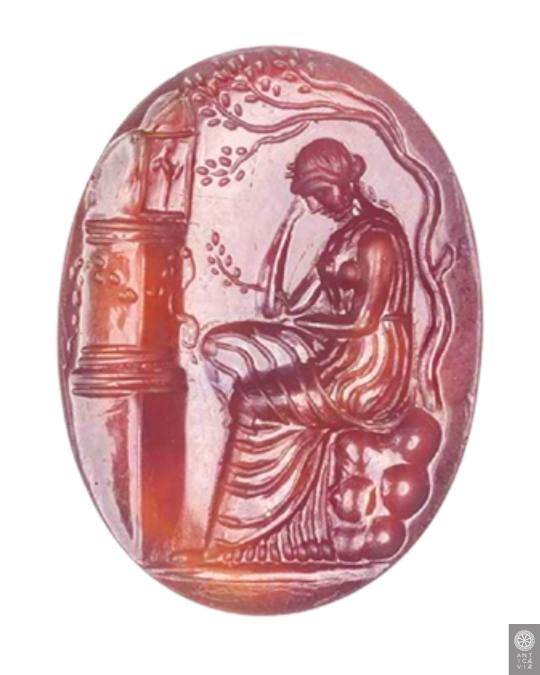

Carved carnelian intaglio with a woman sitting in front of the shrine of Priapus on one side and a snail surrounded by phalluses. The inscription reads as MESSAL INVICTA CLAUDI and references Empress Messalina infamous for her promiscuity (probably embellished by her political enemies after her death though).
#messalina#valeria messalina#intaglio#carnelian#gem stone#gem#ancient rome#roman empire#ancient culture#ancient history#ancient art#julio claudian dynasty#nsfw
4 notes
·
View notes
Text

The Victory of Calvatone, a gilded bronze statue of the goddess of Victory, set up probably around 165 AD by local bigwig Marcus Satrius Maior in Bedriacum (today Calvatone) to celebrate Marcus Aurelius' and his co-emperor Lucius Verus' victory over the Parthians. Statue itself has an interesting modern history. It was discovered in 1836, sold to Germany where it was displayed in a museum and it subsequently disappeared at the end of the WWII. It was only recently "re-discovered" in St. Petersburg's State Hermitage Museum.
#ancient rome#ancient art#ancient history#ancient culture#roman empire#statue#bronze szatue#bedriacum#goddess of victory#victory of calvatone#vittoria di calvatone
45 notes
·
View notes
Text

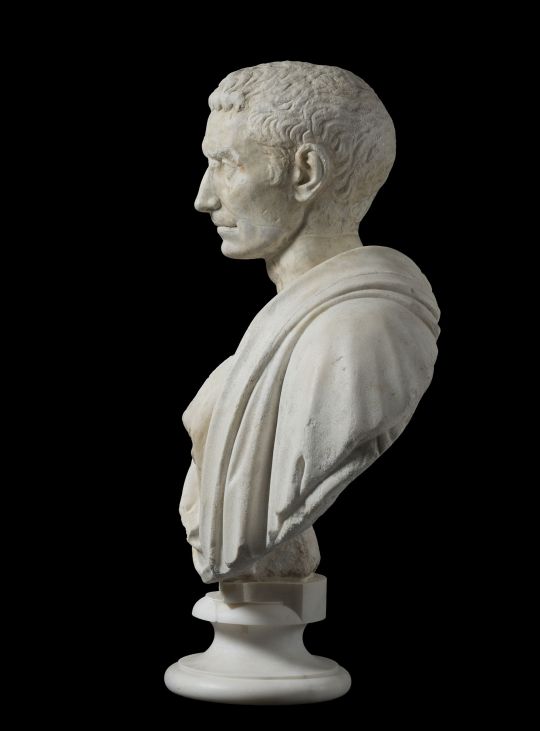
Bust of a man, often described as that of Gaius Julius Caesar, but this identification is not definite. If it is indeed the portrait of Caesar, it is most likely posthumous. It is now part of the Torlonia Collection.
#ancient rome#roman empire#ancient history#ancient art#ancient culture#ancient civilisations#gaius julius caesar#caesar#julius caesar#it looks very ceasary from the profile
17 notes
·
View notes
Text
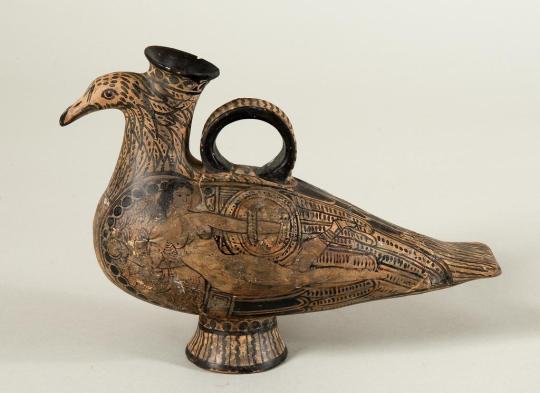


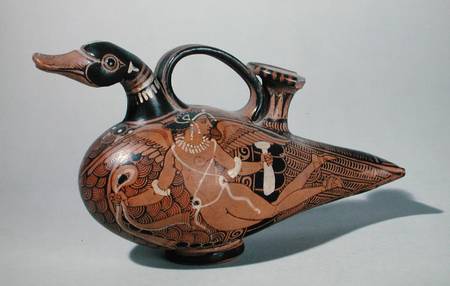
Etruscan duck-shaped askoi (sort of a flask), created in the period around 350-325 BC in Clusium (today's Chiusi).
#askos#askoi#pottery#etruscan civilisation#etruscans#etruscan pottery#red-figure pottery#clusium#etruria#ancient art#ancient artefacts#ancient culture#ancient civilisations#things i didn't know i needed
59 notes
·
View notes
Text


Top: Mosaic of the street musicians, from the so-called Villa of Cicero, located outside Herculaneum.
Bottom: Fresco of the same scene, from a villa in Stabiae, several kilometres to the south.
It is believed that both are copies of some previous Greek artwork.
#ancient rome#roman empire#ancient history#mosaic#fresco#stabiae#ancient art#herculaneum#mt vesuvius
19 notes
·
View notes
Text


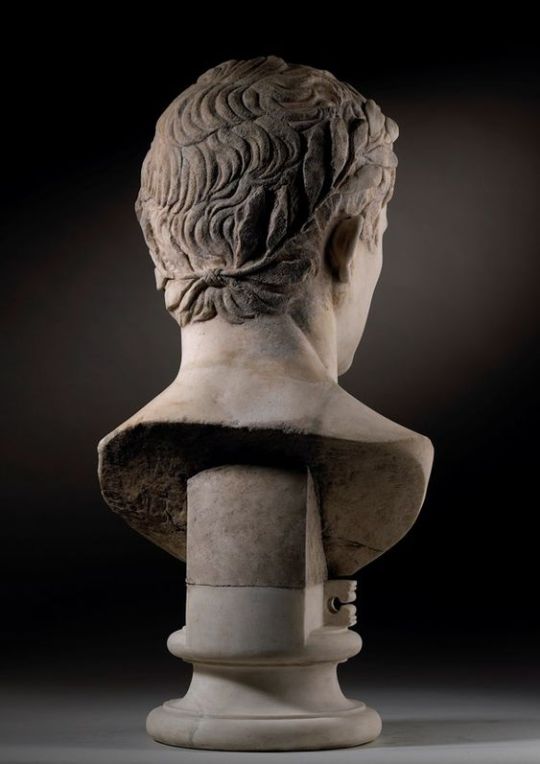
The marble bust of Augustus wearing a laurel wreath, of unknown provenance but most likely contemporary to the Augustan period, now a part of a private collection in the UK.
#augustus#marble bust#emperor augustus#caesar augustus#bust#ancient rome#roman empire#ancient art#roman art#i wonder how many of these treasures are locked behind closed door where only greedy people can appreciate it
54 notes
·
View notes
Text
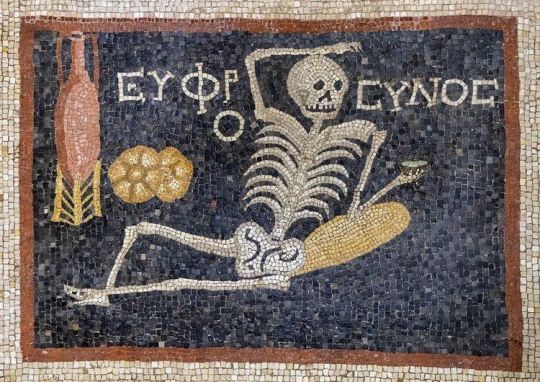
One of the panels of a mosaic of a cheery skeleton uncovered in Turkey in 2016, probably dated to the Late Roman era Antioch. The word can be transliterated as EUPHROSYNOS (cheerful).
#ancient rome#roman empire#ancient history#antioch#skeleton#mosaic#roman era#roman antioch#ancient art#ancient civilisation#ancient civilisations#ancient culture#memento mori
1K notes
·
View notes
Text
16th March 37 AD, Caligula became the third Roman Emperor.
The Romans really hoped they would have a good time after over twenty years of dour, unpopular Tiberius, and it certainly proved to be eventful.

Here is a statue of Caligula on a horse. Perhaps it is Incitatus, his favourite horse, which, despite what the most popular stories say, was not made a consul. However, Caligula did give the horse lavish stables and its own slaves to take care of him.
#and no wonder because horses are awesome creature#caligula#gaius caesar august germanicus#emperor caligula#ancient rome#roman history#ancient history#ancient art#roman empire#ancient culture#statue#equestrian statue#horse#incitatus
17 notes
·
View notes
Text


Portrait bust of Tiberius, now part of a collection in Louvre.
According to the biographer Suetonius, Augustus had this to say about Tiberius:
‘Alas, for the people of Rome, doomed to such slow-grinding jaws!’
But even Suetonius doubts the veracity of this statement and cites several examples to the contrary.
The people of Rome indeed disliked Tiberius' rule which lasted long twenty-two years. He died on 16th March 37 AD.
There are some rumours that he was helped along by his successor, Caligula, but Tiberius was seventy-seven years old at the time of his death and it was most likely natural.
#tiberius#emperor tiberius#tiberius julius caesar augustus#louvre#roman empire#ancient rome#roman emperor#marble bust#ancient roman art#happy deathday
15 notes
·
View notes
Text
If you're ever trying to figure out which Caesar you're looking at, look for Augustus' double curl. It's on like 90% of his statues and a lot of his cameos, always in the same spot.
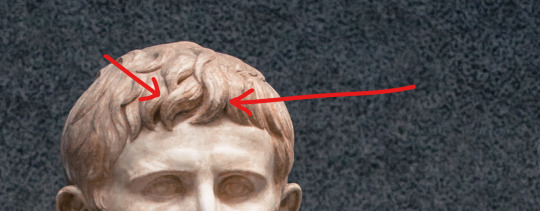
Julius Caesar, on the other hand, usually looks pointy, wrinkly, and like he's plotting to steal your wife.
439 notes
·
View notes
Text
Octavia Minor
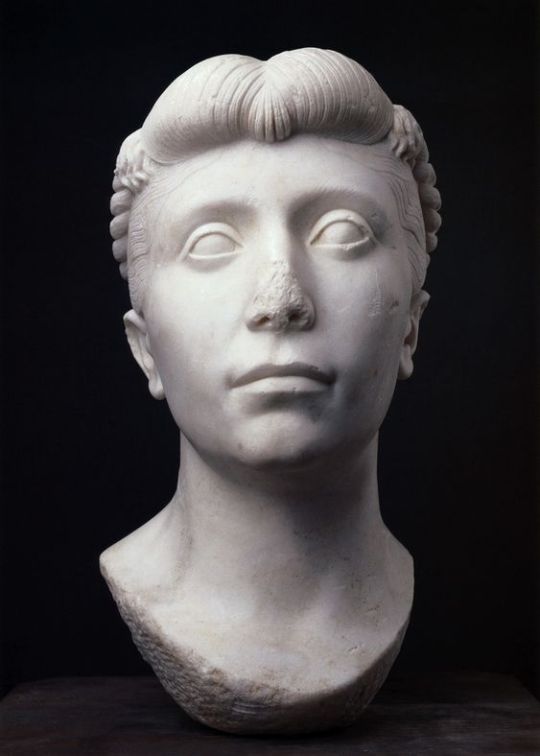
Portrait of Octavia Minor, the sister of Augustus. Museo Civico
36 notes
·
View notes
Text

Ptolemy, the last king of Mauretania. Ptolemy was the son of Juba II of Mauretania and Cleopatra Selene, making him the only known grandchild of Cleopatra VII and Mark Antony. Just like many other children of the client kings of Rome, Ptolemy spent his youth in Rome learning to be a loyal Roman ally under the supervision of his maternal aunt Antonia Minor.
Ptolemy became king of Mauretania in 23 AD. In 40 AD Ptolemy was executed by Emperor Caligula while visiting Rome, allegedly because the latter was jealous of Ptolemy's splendid purple cloak. He was probably the father of a daughter named Drusilla. Many years later, this Drusilla married priest-king of Emesa and there is some speculation that she was an ancestor of Roman Empress Julia Domna.
#ptolemy of mauretania#mauretania#client kingdoms#ancient rome#roman empire#ancient history#classical antiquity#cleopatra#cleopatra selene#bust#statue#ancient art
45 notes
·
View notes
Text
Archaeologists, digging up a bust of balding Roman man dated to the first century BC: Caesar, is that you?
#there are so many heads proposed to depict Julius Caesar#seems to me that the moment the guy is bald there is speculation that it's caesar#ancient rome#gaius julius caesar#this is nothing against archaelogists#at one point i wanted to be one
13 notes
·
View notes
Text

Bust of Marcus Agrippa. As it had been found on Capri, it was first identified as Emperor Tiberius but scholars are now inclined to think it portrays Agrippa (who was Tiberius' father-in-law during his life). The fold of the toga over his head is called Capite Velato ("with covered head") and it establishes that he is depicted as a priest in this portrait.
#marcus agrippa#ancient culture#ancient rome#roman empire#ancient history#ancient art#julio claudian dynasty#ancient civilizations#ancient civilisations#capri#emperor tiberius#statue#bust
62 notes
·
View notes
Photo

Lead pollution in Greenland ice shows rise and fall of ancient European civilizations.
428 notes
·
View notes
Text
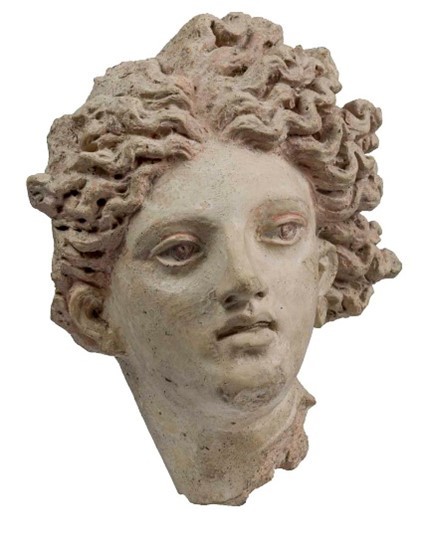
Head of Etruscan goddess Catha (in Greek called Leucothea). There is some debate about whether Catha was a Sun or Moon deity. She also seems to be connected to fertility and childbirth and she might have also guided departed souls into the Underworld.
#leucothea#catha#etruscan#etruscans#etruria#ancient rome#ancient history#etruscan history#etruscan religion#ancient religion#polytheism#etruscan statues always seem to have interesting hairdos
36 notes
·
View notes
Text


Portraits of Julio-Claudian prince and princess, identified as Britannicus and Claudia Octavia respectively. They certainly look like they could be siblings.
54 notes
·
View notes